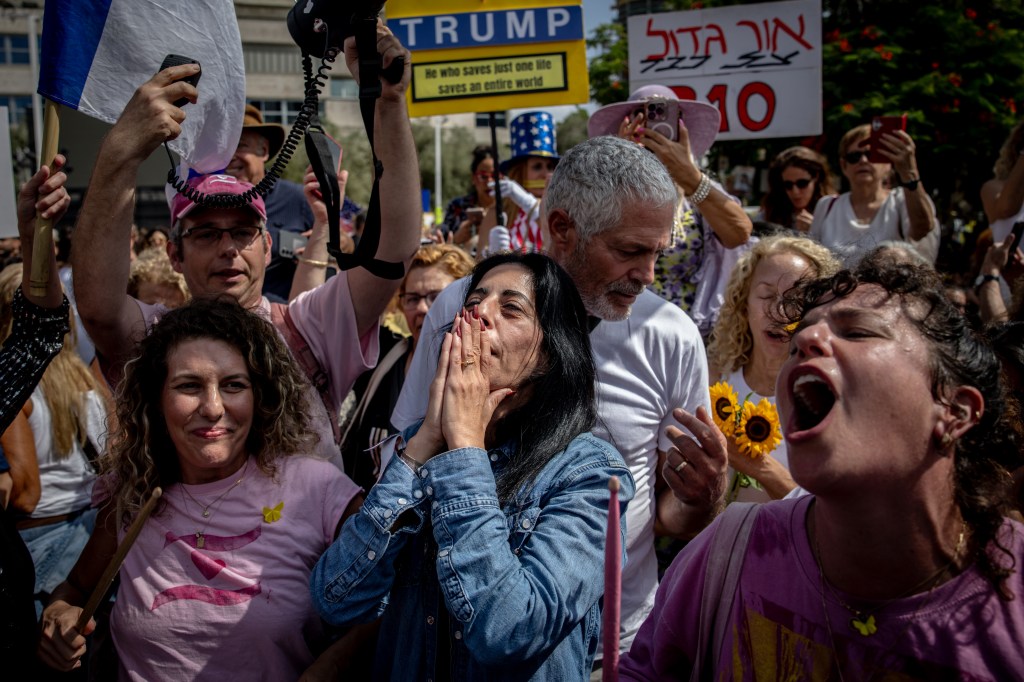Our Best Stuff From a Big Week in the Middle East
The attack shattered the notion that Hamas could be deterred through economic incentives and other pressure points. And that newfound realization extended to the country’s other enemies, giving birth to the idea that adversaries had to be neutralized rather than simply managed. In the two years since October 7, Israel has gone on the offensive to significantly degrade the threats posed by terrorist groups Hamas, Hezbollah, the Houthis, and their key state backer, Iran.
Israel fought on multiple fronts this year, taking on Lebanon-based Hezbollah and clashing with Iran directly. Last fall, Israel carried out an unusual strike that used remote detonation to kill at least 32 Hamas operatives and wound many others by detonating pagers and walkie-talkies. In June, Israel and Iran fought a 12-day campaign of airstrikes targeting military and nuclear sites, a war that wound down days after the U.S. struck Iran’s enrichment facilities.
The Israeli campaign saw notable successes: the assassination of Hamas leader Ismail Haniyeh in July 2024 and the killing of his successor Yahyah Sinwar three months later. Yet diplomatic momentum toward a deal may have come from a different turn of events that was not intended. A failed strike on Qatari soil appears to have created the pressure that opened a window for negotiations.
On September 9, Israel struck what it believed was Hamas’ headquarters in Doha during a leadership meeting; the strike missed its intended upper-echelon targets but did kill a Qatari security officer and several lower-level Hamas figures. Qatar has long hosted Hamas’ political leadership while also maintaining ties with Western nations and hosting major American facilities. That combination made the Doha incident diplomatically explosive and forced regional actors to recalibrate quickly.
One immediate critic of the Doha strike was President Trump. “I was very unhappy about it, very unhappy about every aspect,” Trump told reporters. According to accounts of the ensuing diplomatic push, the White House spent weeks engaging Qatar and other Arab capitals, pressing Israeli leaders to move toward an end to the fighting and laying out a framework for a ceasefire and hostage return.
Those efforts culminated this week when Trump announced that Israel and Hamas had agreed to the first phase of a deal: the return of hostages and a partial withdrawal by Israel. The initial agreement hinges on orderly implementation in the coming days and on the parties sticking to the terms negotiated by regional brokers and aided by U.S. diplomacy.
In his Friday G-File, Jonah Goldberg wrote that if the hostages are indeed released in the coming days, “Donald Trump deserves a great deal of the credit.” He went on to argue:
It apparently didn’t take out its intended targets. But it also galvanized the White House and regional powers to force an end to the war. I don’t think that’s the result Bibi Netanyahu wanted. But it’s a big part of how we got to this moment.
The simple fact is that new facts on the ground created a diplomatic opportunity that Trump seized. This isn’t a backhanded way of denying Trump credit, it’s simply an obvious observation.
Trump is scheduled to travel to the Middle East Sunday night; he will attend the signing of the peace deal in Egypt and is expected to address the Knesset in Israel. Those events will test whether the fragile arrangements on the ground can be translated into a sustained cessation of hostilities and an orderly exchange of captives.
In related reporting, Michael Warren traveled to New York this week hoping to cover Democratic mayoral nominee Zohran Mamdani’s public events and found none on October 7. Mamdani has been a vocal critic of Israel’s campaign against Hamas and appeared to be keeping a low profile in the days around the anniversary. Warren did find Mamdani later at an Israelis for Peace event where speakers repeatedly described Israel’s actions in Gaza as genocide.

